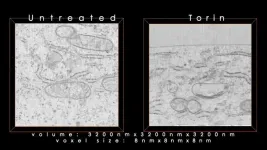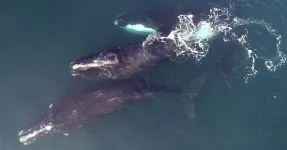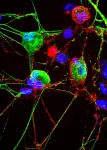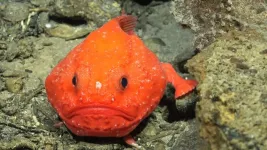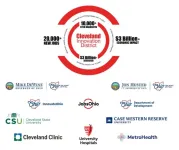(Press-News.org) Modern Eurasian sheep predominantly belong to only two so-called genetic matrilineages inherited through the ewes. Previous research thereby assumed that genetic diversity must already have decreased rapidly in the early stages of domestication of wild sheep. Our study of a series of complete mitogenomes from the early domestication site Asıklı Höyük in central Anatolia, which was inhabited between 10,300 and 9,300 years ago, disproves this assumption: despite a millennium of human interference with the keeping and breeding of sheep, mitogenomic diversity remained invariably high, with five matrilineages being evidenced including one previously unknown lineage. The persistently high diversity of matrilineages observed during the 1,000 years of sheep farming was unexpected for the researchers.
"In Aşıklı Höyük, there were both sheep raised in captivity and wild sheep hunted by the inhabitants of the site. We assume that occasionally managed flocks were supplemented by native wild sheep when necessary, e.g. to compensate for losses due to disease or stress in captivity. One should also consider that people exchanged sheep over wider areas. A possible parallel to such practice can be found in the import of cereal crops to Central Anatolia, which are native to Southeast Anatolia," says Prof. Peters, interpreting the results of the study.
The different matrilineages or haplogroups are similar to the branches of a family tree. Individuals belonging to a particular lineage show comparably little variation in their mitochondrial genomes, because descending from a common female ancestor. Today, haplogroup B predominates among sheep in Europe and haplogroup A in East Asia. Consequently, mitogenomic diversity decreased later in the domestication process or at the time when sheep farming spread beyond the original domestication region during the Neolithic, a question that had so far remained unanswered.
To address this question, the international team of researchers led by Prof. Joris Peters, State Collection of Palaeoanatomy Munich (SNSB-SPM), Prof. Ivica Medugorac, Population Genomics of Animals, LMU Munich, and Prof. Dan Bradley, Smurfit Institute for Genetics, Trinity College Dublin, investigated matrilineal affiliation and phylogenetic relationships of 629 modern and ancient sheep across Eurasia.
Comparison of Aşıklı Höyük's results with ancient DNA signatures in archaeological sheep bones from later settlements in Anatolia and surrounding regions as well as in Europe and Middle Asia clearly illustrates that mitogenomic diversity decreased significantly in the ninth millennium before present. One result of this is the aforementioned dominance of matrilineage B in Europe. "We can now assume that this development is due to a so-called "bottleneck" that took place later in the Neolithic period, when sheep farming spread beyond the natural distribution of wild sheep following the early domestication of the species. This bottleneck likely relates to so-called founder effects, in which smaller flocks were consecutively removed from an already greatly reduced sheep population in the course of the spread of small animal husbandry on the way to Europe," Peters continued.
"Particularly fascinating are the insights gained through the integration of genetic and archaeological datasets. Together with the numerous other mosaic pieces that zooarchaeologists, archaeologists and geneticists have collected over decades, an increasingly coherent picture of human cultural adaptations since the last Ice Age now emerges. Studies like these show that animal domestication is not to be understood in terms of a cross-generational plan, but rather as a process of chance and necessity that has significantly shaped our recent cultural history and accompanies us to this day," adds Prof. Ivica Medugorac.
END
First insights into the genetic bottleneck characterizing early sheep husbandry in the Neolithic period
2024-04-12
ELSE PRESS RELEASES FROM THIS DATE:
Theories that explain the crisis in democracy are inadequate for Latin America, experts say
2024-04-12
The theories offered by the dominant literature in political science today to try to explain the sources of the political polarization that has endangered democracy around the world are adequate for the United States and Europe, but do not make sense for the countries of Latin America. For this reason, greater collaboration among political scientists is needed to identify other, more plausible hypotheses for the phenomenon that the region is also experiencing.
The assessment was made by researchers participating in a panel discussion on democracy and social inclusion held on April 9 in Chicago (United States) during FAPESP Week Illinois https://fapesp.br/week/2024/illinois.
“There’s ...
Starving cells hijack protein transport stations
2024-04-12
A new study details how nutrient-starved cells divert protein transport stations to cellular recycling centers to be broken down, highlighting a novel approach cells use to deal with stressful conditions.
New proteins bound for outside the cell are manufactured on the endoplasmic reticulum (ER) – a snaking membrane inside the cell. Grape-like tubular outgrowths on the ER called ER exit sites serve as transport stations, collecting these newly synthesized proteins and delivering them to the next step in their journey.
In recent ...
Where have all the right whales gone?
2024-04-12
DURHAM, N.C. – Marine researchers have mapped the density of one of the most endangered large whale species worldwide, the North Atlantic right whale, using newly analyzed data to predict and help avoid whales’ harmful, even fatal, exposure to commercial fishing and vessel strikes.
Duke University’s Marine Geospatial Ecology Lab led a collaboration of 11 institutions in the United States that pooled 17 years of available visual survey data covering 9.7 million square kilometers of the U.S. ...
Researchers find no link between COVID-19 virus and development of asthma in children
2024-04-12
Philadelphia, April 12, 2024 – In the wake of the COVID-19 pandemic, many families worried about the long-term effects posed by the SARS-COV-2 virus. Now, researchers from Children’s Hospital of Philadelphia (CHOP) found that a SARS-COV-2 infection likely does not increase the risk of asthma development in pediatric patients. The findings were published today in the journal Pediatrics.
Respiratory viral infections early in life are risk factors for asthma. Since the SARS-COV-2 virus can cause severe lung inflammation and prolonged respiratory symptoms in certain patients, many families were concerned whether COVID-19 might trigger an asthma diagnosis in their children. CHOP ...
Cell’s ‘garbage disposal’ may have another role: helping neurons near skin sense the environment
2024-04-12
The typical job of the proteasome, the garbage disposal of the cell, is to grind down proteins into smaller bits and recycle some of those bits and parts. That’s still the case, for the most part, but, Johns Hopkins Medicine researchers, studying nerve cells grown in the lab and mice, say that the proteasome’s role may go well beyond that.
Its additional role, say the researchers, may shift from trash sorter to signal messenger in dorsal root ganglion neurons — cells that convey sensory signals from nerve cells close to the skin to the central nervous system.
Results of their experiments, published April 12 in Cell Reports, show that proteasomes may help those specialized ...
Study reveals potential to reverse lung fibrosis using the body’s own healing technique
2024-04-12
he most common type of lung fibrosis — scarring of the lungs -- is idiopathic, meaning of unknown cause.
Researchers are urgently trying to find ways to prevent or slow idiopathic pulmonary fibrosis (IPF) and related lung conditions, which can cause worsening shortness of breath, dry cough, and extreme fatigue. Average survival following diagnosis of IPF is just three to five years, and the disease has no cure.
A recent U-M study from a team led by Sean Fortier, M.D. and Marc Peters-Golden, M.D. of the Division ...
International team co-led by a BSC researcher discovers more than 50 new deep-sea species in one of the most unexplored areas of the planet
2024-04-12
An international group of scientists, co-led by researcher Ariadna Mechó of the Barcelona Supercomputing Center - Centro Nacional de Supercomputación (BSC-CNS), observed 160 species on seamounts off the coast of Chile that had not yet been known to live in the region and suspect that at least 50 of these species are new to science. The recent Schmidt Ocean Institute expedition to the underwater mountains of the Salas y Gómez Ridge, a remote and underexplored area that stretches from ...
Cleveland Innovation District partners exceeding many targets set by state and JobsOhio
2024-04-12
CLEVELAND – Since the Cleveland Innovation District launched in 2021, the founding institutions have made significant progress, including exceeding many of the targets set by the Ohio Department of Development and JobsOhio. Collectively, the institutions participating in this $500 million public-private initiative have created more than 2,600 jobs, spent nearly $1.2 billion on research and innovation, commenced construction of two new research facilities, created dedicated research space comprising more than 550,000 square feet, and awarded more than 7,300 degrees and certificates to support workforce development.
“The Cleveland Innovation District’s progress ...
A third of women experience migraines associated with menstruation, most commonly when premenopausal
2024-04-12
WASHINGTON (April 12, 2024) – A third of the nearly 20 million women who participated in a national health survey report migraines during menstruation, and of them, 11.8 million, or 52.5%, were premenopausal. The analysis was conducted by researchers at Georgetown University Medical Center and Pfizer, Inc., which makes a migraine medication.
Because of the underuse of medications to help treat or prevent menstrual migraines, investigators wanted to understand how common menstrual migraines were and which groups of women could most benefit from potential therapies. The study will be presented April 16, at the American Academy of Neurology ...
MD Anderson Research Highlights for April 12, 2024
2024-04-12
HOUSTON ― The University of Texas MD Anderson Cancer Center’s Research Highlights showcases the latest breakthroughs in cancer care, research and prevention. These advances are made possible through seamless collaboration between MD Anderson’s world-leading clinicians and scientists, bringing discoveries from the lab to the clinic and back.
Recent developments at MD Anderson offer insights into a combination strategy to improve immunotherapy responses, promising trial results for patients with tumors harboring BRAF mutations, a maintenance strategy for patients with acute myeloid leukemia following chemotherapy, a strategy ...



